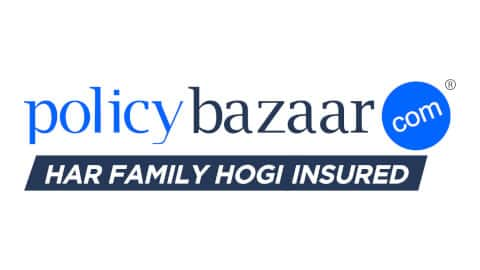1
FY24: 34% Revenue growth, PAT improved from a loss of 488 Cr to a profit of 64 Cr, improvement of 552 CrLeadership View
Important terms in your motor insurance policy that you should know about
For decades, the female share of the population in our country has been under-represented across several verticals. Insurance, which has traditionally been an underpenetrated sector in India, witnesses an even lower adoption rate amongst women consumers. In a country where women constitute 49% of the total population, the need for their financial protection goes up manifold. This holds even truer because their role has been constantly evolving and today, their contribution to the society and economy ranges from being a nurturer to the breadwinner.
Despite firmly holding the fort on both professional and personal fronts, unfortunately, women often vastly underestimate the need to insure themselves and secure the future of their dependents. Playing diverse roles in several capacities makes them a valuable asset to the household and the economy. And so, it becomes all the more important for them to exercise more control over insurance decision making. The insurance industry and the authorities have worked in tandem over years to facilitate better insurance adoption among women and formulate products catering to their specific needs. Here’s understanding how insurance trends have evolved over time for women and the way forward for bridging the gap further.
Participation of women in the insurance market
Historically, there has been a glaring gender gap when it comes to financial planning and insurance coverage in India. However, on the brighter side, Policybazaar’s latest FY21-22 data suggests that the share of policies bought by women in the age-group 25-40 years stands at 45%, whereas the share for women in the age bracket of 40-55 years was found to be 30%. The data also states that there’s been a 45% YoY growth in the number of women consumers opting for a high sum assured of Rs 1 crore. This points towards an increased awareness around health insurance among women. Interestingly, the majority of women are investing in individual health insurance policies. While 62% of women opted for the individual health plan, the remaining 38% invested in a family floater plan. This is a positive indicator of women taking cognizance of their individual health needs.
The life insurance industry fares better when it comes to adoption. As per the IRDAI annual report, around 9.3 million life insurance policies were issued to women which comprised 33% of the total 28.1 million new policies issued in FY 2021. This shows an upward growth from 32% in the previous year. Women consumers are significantly aware of life insurance needs as compared to health insurance where around 20% women were covered by health insurance as per the National Family Health Survey – 4. The report also says that Kerala, Sikkim and Andhra Pradesh are among the states with the highest women consumers of life insurance policies, while Haryana, UP and J&K are among the ones ranking lower on the list. Government data suggests that 38% women suffer from one or more chronic illness as compared to 30% men. This makes them more prone to such illnesses and makes both health as well as term insurance an absolute necessity for them.
Product innovation catering to women’s insurance needs
The rapid growth and innovation in the insurance industry have extended to provide women consumers with products that specifically address their insurance needs. Talking about term insurance, the recent launch of independent term insurance plans for homemakers is one such example. Conventionally, the notion of homemakers not contributing to the economy persisted for a long time. The Supreme Court judgment last year reiterated that this notion is problematic and must be overcome. This plan brings about a monumental change in that perception and strongly establishes the value that a homemaker brings to a household and an economy. Thus, it is equally essential to safeguard her life and the plan has helped eliminate the dependency on spouse for homemakers.
Similarly, maternity cover in health insurance financially safeguards women from the exorbitant expenses associated with pregnancy and childbirth. Industry experts recommend women to opt for personal health insurance with maternity cover to maximize their protection. The coverage includes diagnostic tests, pre and post-natal costs and newborn expenses as per terms and conditions. Health insurance with maternity benefits also offers a fair deal of protection against any uncertain consequences which require hospitalization and treatment during maternity.
Digitisation – an enabler for higher adoption
Digitisation is rapidly transforming the landscape of the insurance industry. This is propelling optimism for the future roadmap of insurance. But more than that, it is changing the consumer’s outlook towards availing of insurance and financial services. While it is a monumental change for every consumer, it definitely makes insurance adoption much easier for women. The IAMAI’s 2020 report states that 31% of internet users belong in rural areas and 43% of the total internet users in India are women. This makes insurance decisions far more convenient for them and will eventually translate to higher adoption as well. The advent of InsurTechs is further fuelling this change by providing them with an end-to-end digital journey – right from discovery to comparison to purchase to claims assistance. As of 2021, out of all the female customers coming onto the Policybazaar website, 48% of women opted for a term life cover with a sum assured of 1 crore and above, while the other 30% invested in a cover of Rs 50 lakh & above.
While there’s still a long way to go for women consumers to be adequately insured, the current trends definitely promise a brighter future ahead. Women today are shaping the future with their enormous contribution to the family, society and country. It’s important they take charge of their financial safety and future as well. They are the strongest pillar of the economy, and therefore, need a stronger safety net as well.
(By Santosh Agarwal, CBO-LI, Policybazaar.com)














